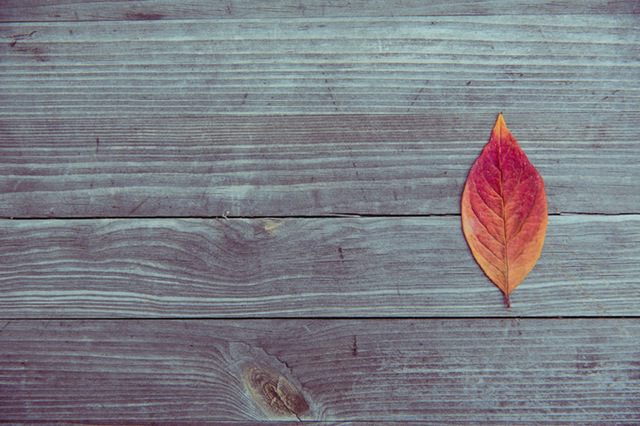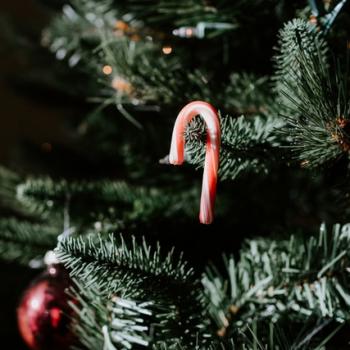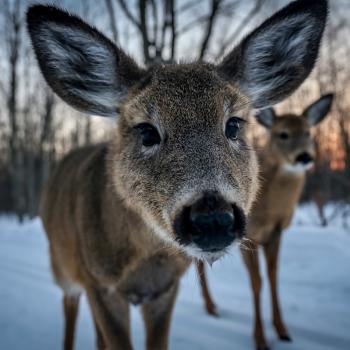Let me tell you this really sad thing I used to do when I lived in the desert.
In October–after 4 solid months of unrelenting triple-digit temps–we would get about 2 hours of cool in the mornings. For those two blessed hours, I would put on boots and my favorite jean jacket; go to a coffee shop and order a latte (maybe even a spicy Mexican Mocha); and I would sit there, pretending it was fall.
By about 10am, the sun would brutally remind me that there is no such thing as fall in the desert. I would change clothes and go about my day, trying to revel in the other beauties of desert life–hot air balloons dotting the horizon, gorgeous mountain vistas, crayon-blue skies every day… It did not suck, believe me.
But every year in the October/November zone, a small part of me would go into mourning. A bone-deep soul longing that neither latte nor killer boots could appease. Something in my body and spirit craves fall, and after 7 years without it, I started feeling decidedly ‘off’ in some ways I can’t explain.
So imagine my surprise when I moved to Kansas and found that fall has all but disappeared.
In fact, there seems to be an all-out war on fall: brought to you by climate change and capitalism.

While our best efforts at sustainable living might preserve our air and water for future generations, it seems the 80-degree Octobers are here to stay. Even in the Midwest. That extended summer means not only a sadly shortened boot zone, but more importantly, a startling lack of fall color. Just a browning decay, and a blowing away.
Hold that image as the earth’s living metaphor for what corporate America has done to the same season.
I had a (very small, polite) tantrum at the liquor store yesterday when I found that ALL the fall seasonal brews were gone–replaced by the Snow Day/Nutcracker/Christmas varietals. I was like… IT.IS.HALLOWEEN. How does Halloween not count as fall? All of November is still fall. Thanksgiving, which is the END of November, is the pivotal celebration of all things fall. It embodies the joy of the harvest, the fruits of hard labor, the gathering in of beloveds and the way of abundant life. Christmas is this whole other thing, and it’s nowhere near time for that yet!
I’m not just annoyed about the lack of Oktoberfest beer in actual October–though I do find its absence profoundly ironic. There’s a deeper reason that I need for fall to be its own thing–the same reason that you need for fall to be its own thing. You may not feel as disgruntled about it as I do, but it is a universal necessity.
The fact that store aisles are already full of Christmas candy and snowman decor and Santa junk points at the obvious truth that businesses want our money and they want it now. This is not surprising.
What I do find surprising–and troubling–is that so many people actually welcome the early onslaught of Jingle Bell Rock, and rush with glee to the Hallmark Channel’s inexplicable airing of Christmas romances in November (the notion of “Christmas romance” being fodder for a whole other post).
To be clear, I love Christmas. LOVE it. The decorations, the music, the smells, the rush and busyness of the holy days at church, the BAKING. Even the presents. Though I do less shopping than most folks I know, I acknowledge the joy of giving–and, ok, receiving–a brightly wrapped package that could contain any form of joyful surprise. It is, all of it, wonderful.
Which is exactly why I want to enjoy all of that seasonal goodness in its proper season. And not during a time that is meant for other things–things like simplicity, stewardship, service and, most importantly– the art of transition.
When Christmas shows up before we’ve even put the pumpkins away, it says to me that we have abandoned the spiritual work of transition; the ability to savor the joys of a particular season without rushing to the next one; the discipline to sit through a time of stillness to mark the turning, without hurling ourselves headlong into the next celebration.
In church, we teach our children about the liturgical year. We tell them that the stories of God remind us that there is a season for everything, and that every season has its gift and purpose. The changing colors of our worship space–much like the changing colors in nature– make us mindful of what each season has to teach us about life and faith. These subtle shifts remind us that God has made everything beautiful in its time.
Those are important life lessons for adults and children alike; and those lessons are about far more than the “right” time to hang lights or sing Rudolph. It’s about how we navigate life changes with grace and purpose; how we weather difficult seasons in relationships; how we respond to crises, whether personal or global; even how we process our relationship with our own aging bodies, and ultimately, how we face death when it comes to us and the ones we love. If we spend so much of our lives at the height of celebration–with a full 25% of the calendar year devoted to all things Xmas–how do we learn to live through those thin ‘between’ places of growth and change?
If I’m being purely confessional, I am an Enneagram 7. I am all about the fun, the joy, the life of perpetual celebration. But what I’ve learned, sometimes the hard way, is this: we have to make time for other seasons and other postures, or we come down hard and fast when those not-so-amazing times are thrust upon us.
I do not entirely blame capitalism for the demise of my beloved autumn. Rather, the world of industry has tapped into a preexisting spiritual sickness in the heart of humanity–the inability to wait, and watch, and be, while trusting our place in an unfolding story that is far greater than ourselves.
Call me a Grinch, but it isn’t just about Christmas. We have countless other ways of living on our own time, instead of within the seasons gifted to us by God and nature. It’s wearing shorts in “spring,” even when there’s snow on the ground; it’s closing the pool on Labor Day, even when there are still 90-degree days ahead; it’s about letting children see and experience things they aren’t ready for, because they want so badly to grow up; buying tomatoes in January that didn’t even come from the ground; it’s forcing a smile through a season of grief, because you should be “over it” by now.
When we ignore natural rhythms and replace them with our own, we run the risk of missing some moments of unexpected joy–a fullness that we could never create or contrive within our own sense of time. We come up dry and longing, wondering where we went wrong… until the very earth revolts, slowing down its turning to show us what we missed.
















